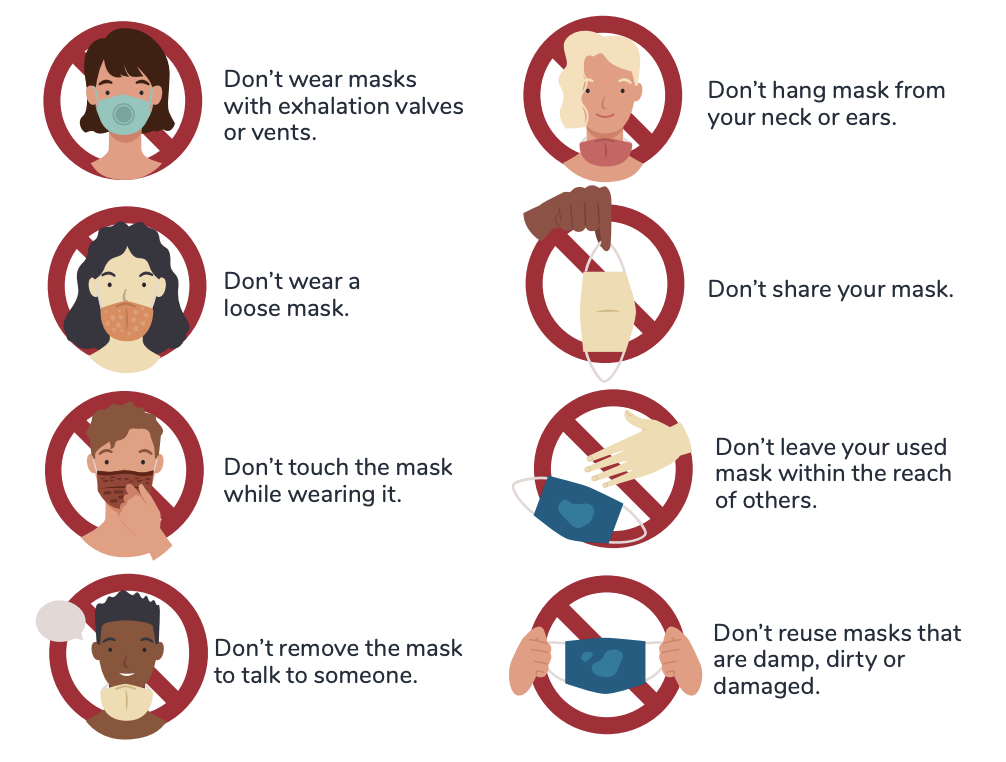
Three-layer masks recommended by Canada’s top doctor
November 5, 2020
By
The Canadian Press
Experts say recommendations make sense with winter driving us indoors

The federal government’s COVID-19 advice includes a poster on how to safely use a non-medical mask or face covering. (Canada.ca)
By Melissa Couto Zuber
As the cold winter weather forces most of us indoors during the COVID-19 pandemic, Canada’s health leaders say it’s time to upgrade our cloth face masks.
Dr. Theresa Tam, the country’s chief public health officer, said in a news conference Tuesday that masks with three layers — two cloth plus a filter — are now recommended over the two-layer face coverings previously suggested.
While the new recommendations caused a stir in the House of Commons on Wednesday, with Conservative leader Erin O’Toole suggesting they’re not in line with current provincial advice and may breed confusion, medical experts across Canada agreed that a three-layer mask works better than one with two layers.
Dr. Jing Wang, a clinical instructor at the University of British Columbia who has studied different face mask materials, says the timing of the new recommendations makes sense.
“I think it’s prudent to have a more stringent indoor mask policy, because it’s very difficult to stay distant indoors,” she said. “And if we’re spending a lot of time indoors, there’s more aerosol buildup in the air, so we should especially be wearing an effective mask.”
Advertisement
Wang says a two-layer cotton mask is about 60 per cent effective in trapping coronavirus particles being spewed from the wearer’s mouth — provided the mask is being worn correctly and has a tight fit around the cheeks.
But adding a filter to the same two-layer cloth mask can increase its effectiveness.
“You can kick it up to about 80 or 90 (per cent), and a regular surgical mask is anywhere between 60 to 90 per cent effective,” she said. “So essentially, when you have a two-layer cloth mask with a filter, it could be just as good as a single-use surgical mask.”
Aligned with WHO
Dr. Lisa Bryski, an emergency room physician in Winnipeg, wasn’t surprised by Canada’s new mask-wearing measures, saying they align with those of the World Health Organization (WHO).
Bryski also says our knowledge of face mask effectiveness has expanded since the pandemic began, which would explain why recommendations are evolving.
“We’ve come a long way since March, when you think of how we used to approach the virus,” Bryski said. “We have studies showing that wearing a mask is better than no masks, and that … two (layers) is better than one.
“And now we’re finding that two layers with a filter is better than just two.”
Tam said in Tuesday’s news conference that the new guidelines don’t necessarily mean we have to throw out all of our current cloth masks and replace them with new ones.
She recommended adding a filter to existing masks, and Health Canada’s website now includes instructions for making three-layered masks at home.
The website says filters “add an extra layer of protection against COVID-19 by trapping small infectious particles,” and suggests using either a folded paper towel or non-woven propylene materials like craft fabric, which is used to make some reusable shopping bags.
Wang warns that not all non-woven polypropylene products are created equal, however.
“And it’s not all equally effective,” she added. “Some of them are actually hazardous for the body because they contain preservatives.”
She suggests using a dried out baby wipe — one of the fabrics she tested in her research — because it’s biocompatible, breathable and contains little to no preservatives.
Wang doesn’t propose using coffee filters to line our masks, however, saying they can be thicker than other non-woven fabric and interfere with breathing.
Layering up
Dr. Anna Banerji, an infectious disease expert with the University of Toronto, says most two-layer cotton masks can be easily transformed into a three-layer filtered mask by ripping out the seams and adding a filtered material.
“Just open it up and put in some filter paper,” she said. “You can still use them if you put a filter material in between to sort of trap the virus particles.”
Bryski agrees that old masks don’t need to be thrown out, and they can and should still be worn while in the process of replacing or modifying them.
She wouldn’t advise putting two, two-layer masks on top of each other though.
“Two layers is better than nothing right now, so whatever you have, keep wearing and upgrade as you can,” she said. “But there haven’t been studies showing whether four-layer masks, or wearing double masks, are better than two because most of them are made of the same material.”
Bryski said mask upgrades shouldn’t hamper their breathability, and to refrain from using obstructive material “like plastic wrap or other solids.”
Wang stressed that mask design can be more important than the number of layers on it.
And proper fit on the face will determine how effective a mask actually is.
“Just because you’re wearing a three-layer mask with a filter doesn’t mean it’s automatically more effective if have your nose exposed or if it’s not tightly fitted around your face,” she said. “If you’re not going to wear it tightly and properly, then I don’t see too much of an advantage of having a three-layer mask.”